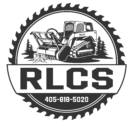Land clearing has long been associated with environmental disruption, from deforestation to soil erosion. However, modern techniques like forestry mulching are changing the game, offering eco-friendly land-clearing solutions that help conserve soil and water. Forestry mulching involves using specialized machinery to cut, grind, and clear vegetation in place, turning it into mulch that remains on the ground. This process reduces waste and provides numerous environmental benefits, including soil conservation, water retention, and promoting healthy plant growth. As more property owners, farmers, and developers seek sustainable methods, forestry mulching has emerged as a powerful tool for balancing land use and environmental stewardship.
What is Forestry Mulching and How Does It Work?
Forestry mulching is a land clearing method that uses a single machine—known as a forestry mulcher, masticator, or brush cutter—to shred trees, brush, and other vegetation into small, natural mulch. This mulch is then left on the ground, acting as a protective layer that conserves soil moisture reduces erosion, and improves soil health. Unlike traditional land clearing methods, which often involve hauling away debris or burning it, forestry mulching leaves organic material on-site, promoting a healthier and more balanced ecosystem.
Forestry mulching is especially effective for clearing land quickly and efficiently, making it ideal for a variety of applications, including site preparation, wildfire prevention, invasive species control, and enhancing wildlife habitats. Its eco-friendly approach makes it a preferred choice for those looking to clear land while minimizing environmental impact.
Environmental Benefits of Eco-Friendly Land Clearing
Forestry mulching is more than just a land management technique; it’s a sustainable practice that offers significant ecological advantages. By conserving soil, retaining water, and supporting native vegetation, forestry mulching provides a host of benefits that traditional clearing methods simply cannot match.
Soil Conservation and Erosion Prevention
One of the primary environmental benefits of forestry mulching is its ability to prevent soil erosion. Traditional land clearing methods, such as bulldozing and burning, expose the soil to the elements, making it vulnerable to wind and water erosion. This can result in the loss of valuable topsoil, which is essential for plant growth and maintaining ecosystem balance.
Forestry mulching, on the other hand, leaves a layer of mulch on the soil surface, which acts as a protective barrier. This mulch helps anchor the soil, reducing the risk of erosion from rainwater runoff and wind. Additionally, the mulch layer helps to retain organic matter, promoting better soil structure and fertility. By preventing soil erosion, forestry mulching plays a crucial role in preserving the integrity of the land, ensuring it remains productive and sustainable.
Water Conservation and Improved Hydrology
Water conservation is another critical advantage of forestry mulching. The mulch left behind after clearing helps retain soil moisture by reducing evaporation, which is especially beneficial in regions prone to drought or where water resources are limited. The mulch acts like a sponge, absorbing rainfall and slowly releasing it into the soil, enhancing the water-holding capacity of the land.
This improved hydrology supports healthy plant growth and reduces the need for additional watering, making forestry mulching an excellent choice for agricultural lands, pastures, and conservation areas. Furthermore, by reducing surface runoff, forestry mulching helps prevent water contamination and nutrient loss, contributing to cleaner waterways and healthier ecosystems.
Promoting Healthy Plant Growth and Biodiversity
Forestry mulching encourages healthy plant growth by creating a more favorable environment for native vegetation. The mulch layer not only conserves moisture but also suppresses the growth of invasive species, giving native plants a better chance to thrive. This is particularly important in areas where invasive plants can dominate and outcompete native flora, disrupting local ecosystems.
Moreover, as the mulch decomposes, it gradually adds organic matter back into the soil, enriching it with essential nutrients. This natural process enhances soil fertility and supports the growth of a diverse range of plant species, promoting greater biodiversity. In the long term, forestry mulching can help restore degraded landscapes and support sustainable land management practices.
Reducing Carbon Footprint and Emissions
Traditional land-clearing methods, such as burning or hauling debris to landfills, release significant amounts of carbon dioxide and other greenhouse gases into the atmosphere. Forestry mulching, however, eliminates the need for burning and reduces transportation emissions by processing vegetation on-site.
Forestry mulching also contributes to carbon sequestration by converting organic material into mulch rather than removing it. The decomposing mulch returns carbon to the soil rather than releasing it into the atmosphere, helping to offset carbon emissions and combat climate change. This eco-friendly approach aligns with broader efforts to reduce the carbon footprint of land management activities.
Minimizing Soil Disturbance
Unlike other land clearing methods that can disrupt the soil structure, forestry mulching minimizes soil disturbance. Bulldozing and uprooting trees can leave deep ruts and compact the soil, which negatively impacts its ability to absorb water and support plant life. Forestry mulching maintains the natural lay of the land, preserving soil structure and reducing the risk of compaction.
Minimizing soil disturbance is particularly important in sensitive areas, such as riparian zones or slopes, where maintaining soil integrity is essential for preventing erosion and protecting water quality. By leaving the soil largely undisturbed, forestry mulching supports healthier root systems and encourages regrowth, making it an ideal choice for sustainable land management.
Applications of Forestry Mulching in Land Clearing
Forestry mulching is a highly versatile technique that can be effectively employed in a wide range of settings, including residential and commercial properties, agricultural lands, as well as conservation areas. Here are several common applications that clearly showcase its numerous benefits and effectiveness:
Common Mistakes to Avoid with Forestry Mulching
While forestry mulching offers numerous benefits, there are some common mistakes to avoid to ensure the best results.
Over-mulching or Inconsistent Mulching Depths
Applying mulch too thickly can lead to waterlogging and restrict air circulation in the soil, negatively affecting plant growth. Conversely, too little mulch may not provide adequate erosion control or moisture retention. It’s important to maintain a consistent mulch depth—typically around 2 to 4 inches—to strike the right balance between protection and soil health.
Clearing Too Much Vegetation
While it may be tempting to clear as much vegetation as possible, removing too much can disturb the natural balance and create opportunities for erosion. It’s essential to leave some vegetation intact, especially along slopes and waterways, to provide natural barriers that help control erosion and support wildlife.
Neglecting to Plan for Regrowth
Forestry mulching doesn’t completely eliminate vegetation; it manages it. Expect some regrowth over time, especially in areas with invasive species. Regular maintenance mulching or additional vegetation management may be necessary to keep regrowth under control and maintain the benefits of your initial clearing efforts.
FAQs
What is forestry mulching, and why is it considered eco-friendly?
Forestry mulching is a land clearing method that shreds vegetation into mulch, which is left on-site. This process conserves soil, reduces erosion, and supports water retention, making it an eco-friendly alternative to traditional clearing methods.
How does forestry mulching help prevent soil erosion?
Forestry mulching leaves a protective layer of mulch on the ground, which shields the soil from wind and water erosion. This mulch anchors the soil, reduces runoff, and helps maintain soil integrity.
Is forestry mulching suitable for all types of land?
Yes, forestry mulching is highly versatile and can be used on various types of land, including forests, fields, slopes, and wetlands. Its adaptability makes it a popular choice for a wide range of land management applications.
Can forestry mulching help with water conservation?
Absolutely. The mulch created during forestry mulching helps retain soil moisture by reducing evaporation and improving water infiltration. This water conservation benefit is especially valuable in drought-prone areas.
Does forestry mulching control invasive species?
Yes, forestry mulching can effectively manage invasive species by reducing their presence and giving native plants a chance to reclaim the area. The mulch also helps suppress the regrowth of unwanted vegetation.
How often should forestry mulching be done?
The frequency of forestry mulching depends on the specific needs of the land and the rate of vegetation regrowth. For some areas, periodic mulching every few years may be sufficient, while others may require more frequent maintenance.
Conclusion
Forestry mulching represents a sustainable approach to land clearing that prioritizes soil and water conservation while supporting healthy ecosystems. Its ability to minimize environmental impact, reduce soil erosion, and enhance water retention makes it an invaluable tool for property owners, developers, and conservationists alike. By choosing forestry mulching, you’re not just clearing land—you’re investing in the long-term health and sustainability of your property and the environment.



